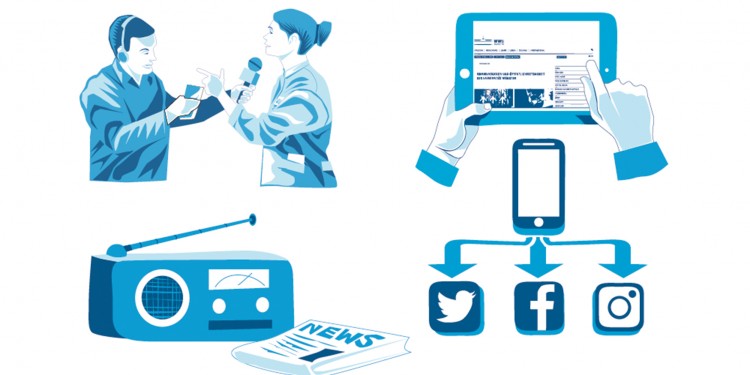
Making research easy to understand
Whether it is press releases, posts, reports in the university newspaper, podcasts, blog entries, lectures or events for children and school students: in all its diversity, science communication – informing the public, in an easy-to-understand way, about developments and results in the area of research – has long been an integral part of knowledge transfer at universities, including the University of Münster.
As Beatrice Lugger, Managing Director of the National Institute of Science Communication, says, “Communication on research topics is extremely important. After all, science and its findings are an integral part of our society and, not least, they are a driving force in our economy. And, particularly in a world which seems to be becoming ever more complex, it is vital that we impart a basic understanding of science and, by doing so, increase people’s trust in it.” In the past 20 years, says Lugger, press offices at German universities and research institutes have steadily become more professional. “There have been enormous changes,” she says.
These changes are reflected, for example, in staffing and funding. Back as 2013, communication specialists at Münster University published a study entitled “Organisation and Public Relations at Universities”, in which they stated that science communication was becoming increasingly important. 60 percent of the press spokesmen and women questioned said at that time that their departments were being enlarged. Also, 70 percent reported that they had a bigger budget at their disposal. A study for 2016 and 2017 (“Examining University Communication”), initiated by the National Association for University Communication and published by the Institute of German Studies at the Karlsruhe Institute of Technology, shows that, in addition, a whole range of different kinds of new formats and channels have been added to the portfolio of university communication. The German Ministry of Education and Research – in its policy document on science communication, published in 2019 – has now likewise turned its attention to the issue. At the same time, traditional science journalism is declining. Circulations are falling, advertising revenue is drying up, and this has led to job losses among editorial staff.
At the University of Münster there are many specialists dealing with these topics. In addition to the Communications and Public Relations Office, many departments and multipliers at the University are themselves also undertaking science communication – for example, the Clusters of Excellence “Religion and Politics” and “Mathematics Münster: Dynamics – Geometry – Structure”. The Centre for Science Communication at the “Religion and Politics” Cluster of Excellence was set up a good ten years ago as a model project for the transfer of knowledge from the fields of the Humanities and the Social Sciences, which have been catching up. “Since then, we have seen a lot of interest – in the media, in politics and in society – in what we offer in the way of research from 20 different disciplines, and enquiries from Humanities networks for consulting work are increasing too,” says the Centre’s head, Viola van Melis. “We provide a transfer of reflective knowledge which adds new perspectives to current challenges such as the corona pandemic, the refugee crisis or climate change – putting them, for example, in a legal, social, political, ethical and historical context. This can help in making better politically informed decisions.”
The “Mathematics Münster: Dynamics – Geometry – Structure” Cluster of Excellence, which has been running since 2019, also focuses on providing easy-to-understand information. “The biggest challenge in mathematics is the highly complex, very theoretical content,” says Victoria Liesche, who deals with science communication and public relations at the Cluster. “Even in the case of projects in applied mathematics, we often have to greatly simplify things in order to make them understandable – without falsifying the facts, of course. But public interest is there. We notice this in the ‘Bridges in Mathematics’ lectures, for example, which are always well-attended.”
And what do researchers themselves think about the topic? “Nowadays, science communication has a much higher status than it used to have – although junior researchers are often more involved in it than the professors. But even the professors are slowly becoming more aware of the importance of science communication,” says Prof. Julia Metag from Münster University’s Institute of Communication Science. “But research at universities is funded primarily from public sources, so the public has a right to learn something about it.”
Author: Kathrin Nolte
This article was first published in the University newspaper wissen|leben, No. 3, May 2020.
